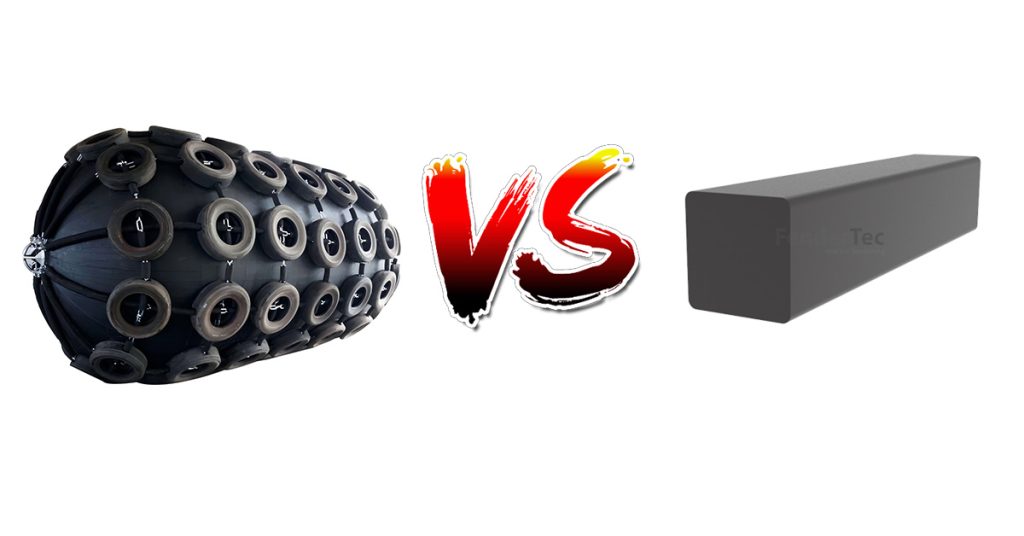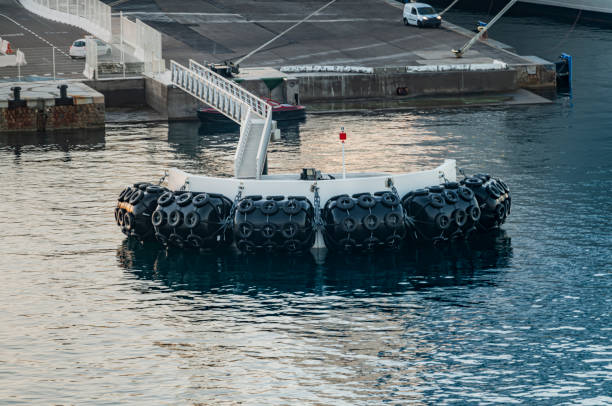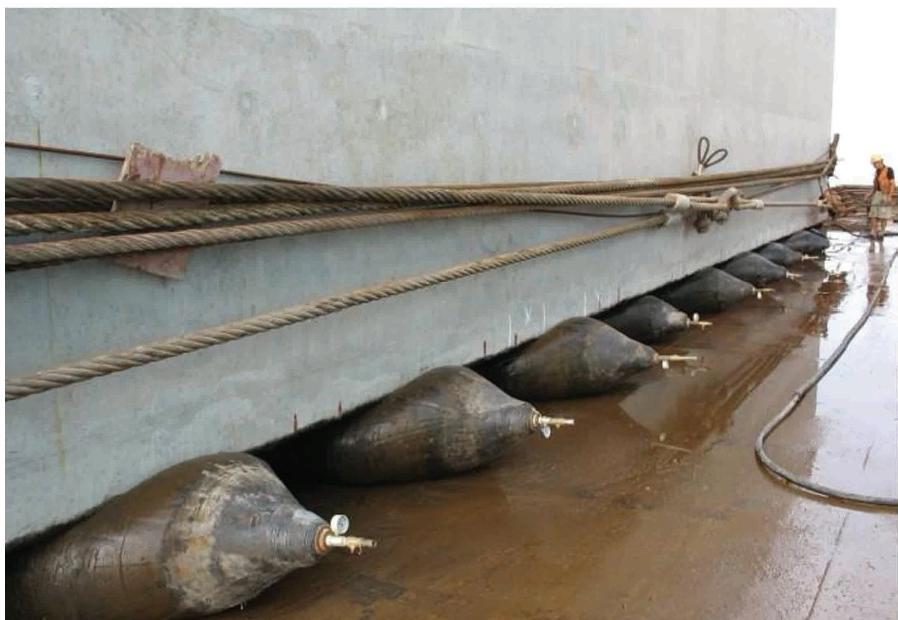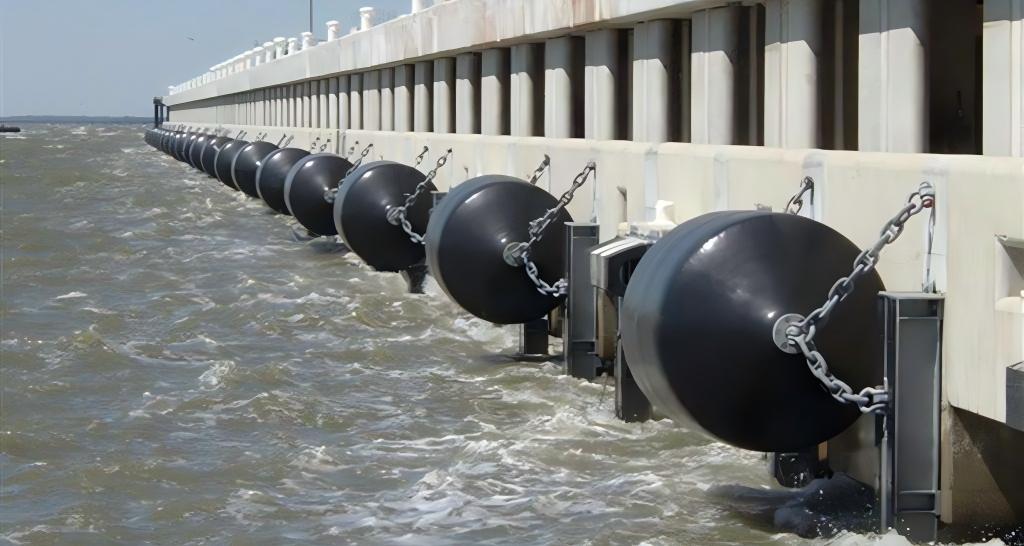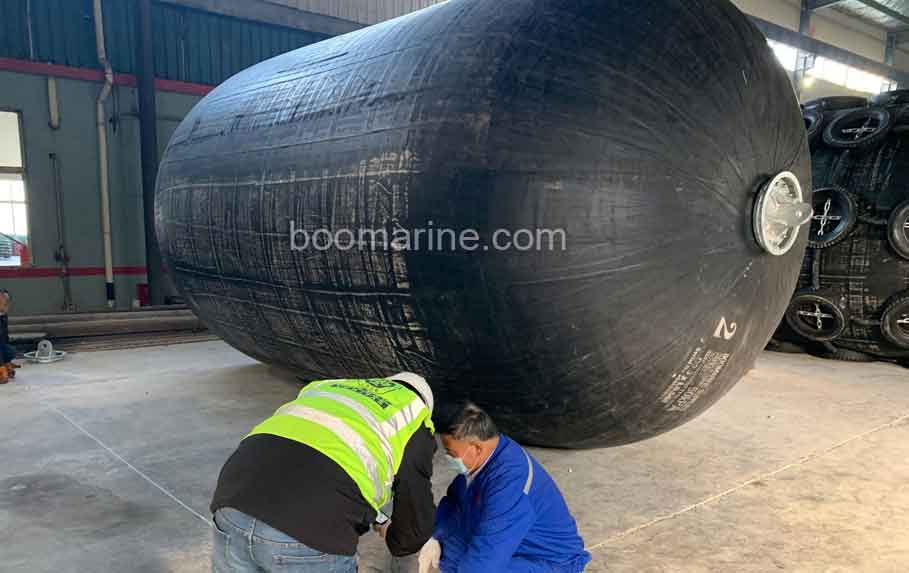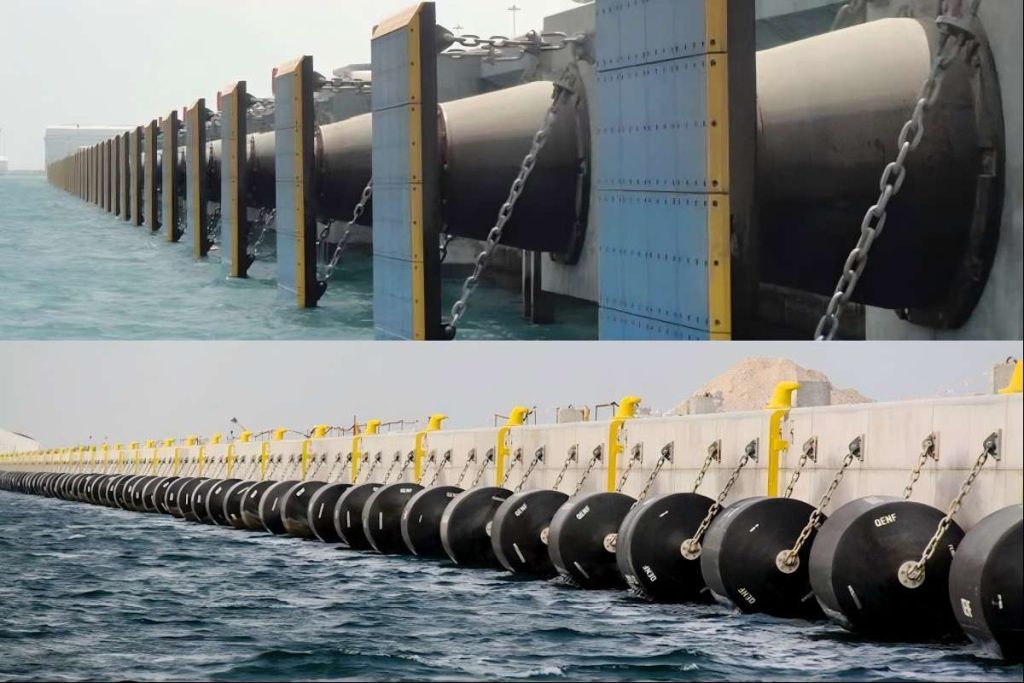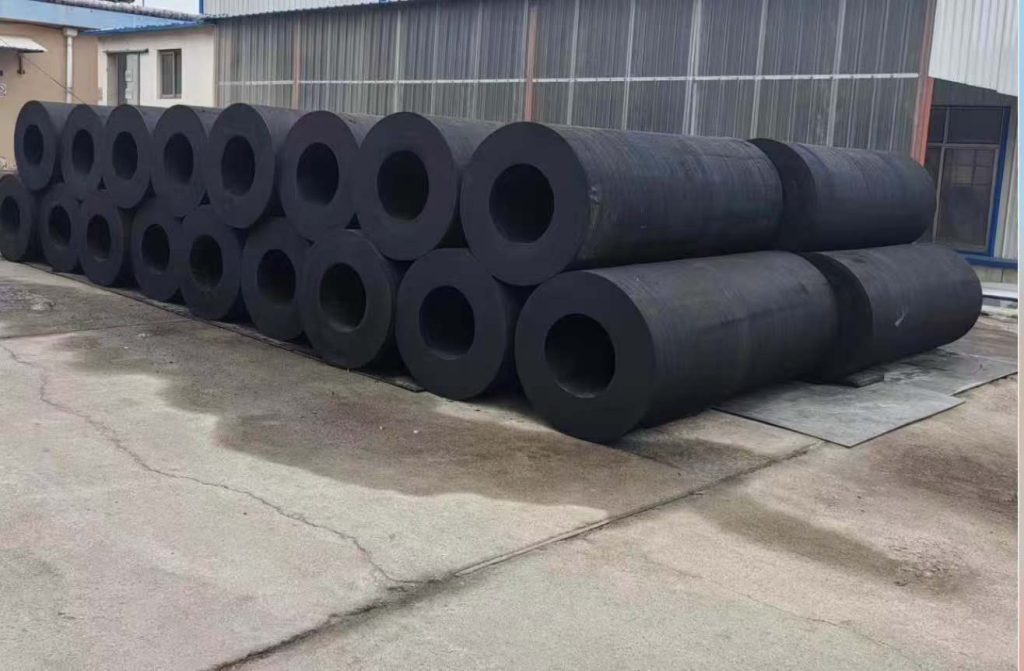We know that some recent problems have made some of our customers confused about choosing marine pneumatic fenders. On this occasion, we wrote this guide to help those who do not know how to choose the right marine pneumatic fender.
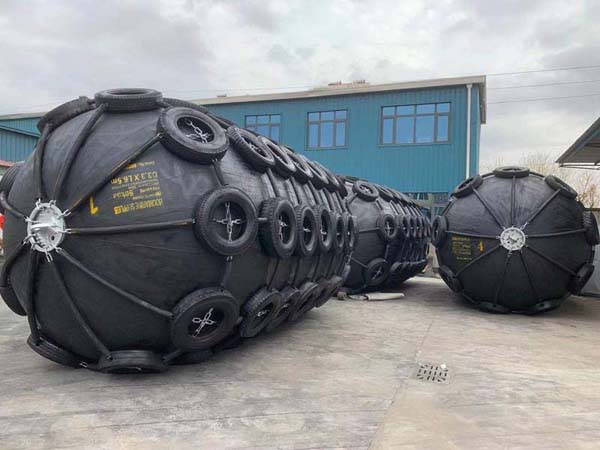
What is pneumatic fender?
Pneumatic fender, also known as Yokohama fender, is a fender system with high strength and high wear resistance. The common size is: D1.0m x L1.5 ~ D3.3m x L6.5m. It consists of an outer rubber layer, a cord layer and an inner rubber layer vulcanized together. There are end flanges at both ends for inflation purposes. The outer rubber layer is made of strong rubber material to withstand external forces and protect the other layers from abrasion as well as hard usage in bad weather conditions.
The pneumatic fender uses compressed air as a buffer medium to absorb the impact energy of the ship, and makes the ship more flexible and soft when docking, so as to achieve the effect of collision and collision avoidance. Therefore, it is widely used for ship-to-ship transfer operations and ship berthing operations.
What’s the application of the pneumatic fenders?
The fenders are used primarily for two applications: Ship-to-Ship and Ship-to-Dock. For ship-to-ship application, the fenders are used to berth or moor two vessels side by side (double-banking) in port or at sea. For ship-to-dock application, the fenders are used to berth a vessel alongside a dock or wharf.
Ship-to-Ship (STS) Operation
Fenders used in STS transfer operation offshore are divided into two categories:
- Primary fenders, which are positioned along the parallel body of the ship to afford the max. Possible protection while alongside.
- Secondary fenders are used to protect bow and stern plating from inadvertent contact if the ships get out of alignment during mooring and unmooring. It is important that secondary fenders are properly secured and it may be necessary to move secondary fenders prior to unmooring if the likely points of contact have changed due to changes in the freeboards of the two ships. Meanwhile, secondary fenders should be light in weight because they must often be hauled well above the waterlines and located in positions with limited access to lifting gear or support points. So it may help if fenders can be moved quickly to counter possible inadvertent contact.
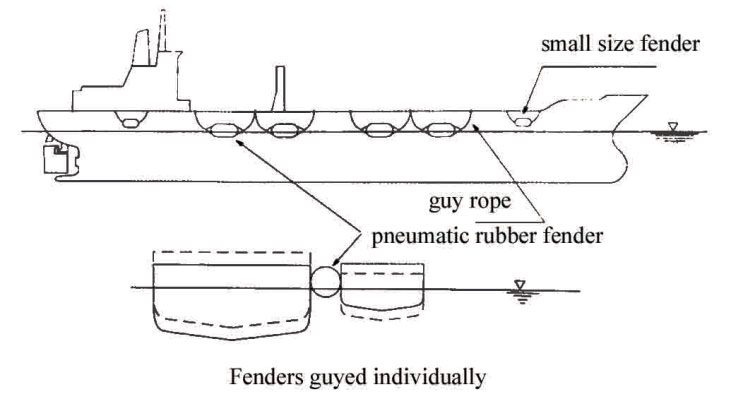
Ship-to-Dock (STD) Operation
Besides being used for STS operation, pneumatic rubber fenders are also used for dock and wharf protection. Compared with traditional solid rubber fenders, pneumatic rubber fenders have perfect energy absorption and soft reaction force. Meanwhile, as floating rubber fenders, they could be adaptable to tide changes. Nowadays, pneumatic rubber fenders are widely used in some large shipyards, docks and ocean platforms.

Quick reference for choosing a suitable pneumatic fender:
In order to calculate a suitable fender arrangement, it is necessary to calculate the berthing energy of a ship which must be absorbed by the fender at the point of contact.
Here is a quick reference for choosing a suitable pneumatic fender:
| PETROLEUM | ||||
|
Equivalent Displacement Coefficient(C) |
Relative Velocity | Berthing Energy | Suggested Fenders |
Typical Pneumatic Rubber Fender |
| Tonnes | m/s | Tonnes.m | Quantity | D x L (m) |
| 1,000 | 0.30 | 2.4 | 3 or more | 1.0 x 2.0 |
| 3,000 | 0.30 | 7.0 | 1.5 x 3.0 | |
| 6,000 | 0.30 | 14.0 | 2.5 x 5.5 | |
| 10,000 | 0.25 | 17.0 | 2.5 x 5.5 | |
| 30,000 | 0.25 | 40.0 | 4 or more | 3.3 x 6.5 |
| 50,000 | 0.20 | 48.0 | 3.3 x 6.5 | |
| 100,000 | 0.15 | 54.0 | 3.3 x 6.5 | |
| 150,000 | 0.15 | 71.0 | 5 or more | 3.3 x 6.5 |
| 200,000 | 0.15 | 93.0 | 3.3 x 6.5 | |
| 330,000 | 0.15 | 155.0 | 6 or more | 4.5 x 9.0 |
| 500,000 | 0.15 | 231.0 | 4.5 x 9.0 | |
| LIQUEFIED GAS | ||||
| Equivalent Displacement Coefficient(C) | Relative Velocity | Berthing Energy | Suggested Fenders |
Typical Pneumatic Rubber Fender |
| Tonnes | m/s | Tonnes.m | Quantity | D x L (m) |
| 1,000 | 0.30 | 4 | 3 | 1.0 x 2.0 |
| 3,000 | 0.30 | 12 | 3 | 1.5 x 3.0 |
| 5,000 | 0.30 | 24 | 3 | 2.0 x 3.5 |
| 8,000 | 0.25 | 25 | 3 | 2.0 x 3.5 |
| 20,000 | 0.25 | 61 | 3 | 3.3 x 6.5 |
| 40,000 | 0.20 | 74 | 4 | 3.3 x 6.5 |
| 80,000 | 0.15 | 78 | 4 | 3.3 x 6.5 |
Types of Protective Net
Pneumatic fenders can come without a protective net and is usually black in color. Colors can be changed according to customers’ needs. Boomarine usually has 3 types of protective nets.
1. Tire-Chain Net Pneumatic Fender – multiple tires are tied to the ball, and the two ends are tied to a special fly ring that can rotate flexibly. Suitable for large ships.
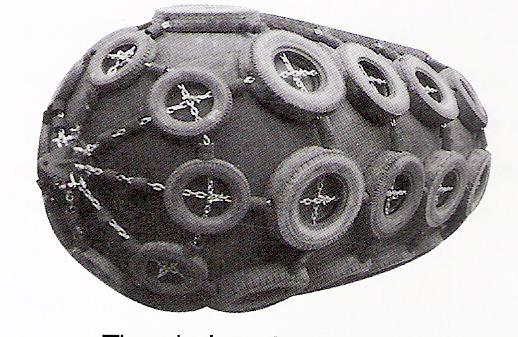
2. Rubber Mat-wire Net Pneumatic Fender – a special rubber pad is tied to the sphere, which can be freely contracted or stretched when squeezed Suitable for small and medium-sized vessels.
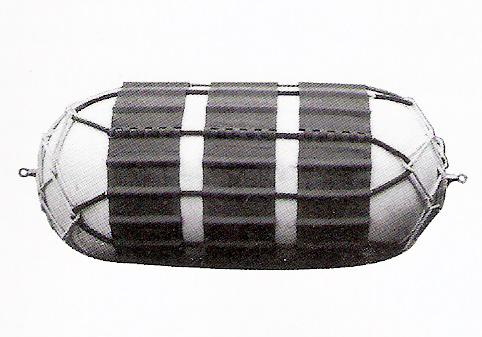
3. Rope Net Pneumatic Fender – The net cover is woven with nylon rope and tied tightly to the ball. Suitable for small boats.
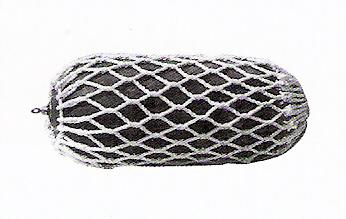
Summary
Pneumatic fenders can not only be applied to all kinds of ships, but also protect ports and piers. Due to a more evenly distributed load pressure, the torque performance against the dock is usually smaller when compared to conventionally designed solid fender systems. How can you choose a pneumatic fender that suits you? First of all, you have to determine your use environment, and then refer to the introduction of pneumatic fenders above to choose the most suitable fender for you.
If you are still confused about choosing a pneumatic fender, please contact us and we can recommend the most suitable pneumatic fender for you.
Why does Boomarine meet your pneumatic fender requirements?
- All our high-quality pneumatic fenders comply with ISO 17357 standards.
- We have 20 years of experience in producing marine fenders. Each finished fender will be carried out inspection by our Q.C before shipping. Our pneumatic fenders design service life is 20 years, our company has a quality warranty of at least 18 months.
- Fast shipping for global deliveries.
- Competitive prices for all types of pneumatic fenders.


